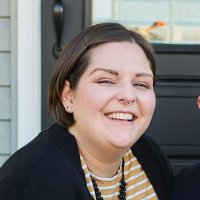
Heather Burrell Ward, MD
@hbwardmd
Psychiatrist. Assistant Professor @VUMCPsych using fMRI/TMS to study the circuit basis of co-occurring substance use and psychotic disorders. Mom.
ID: 1030942895510118400
https://vumc.org/heatherwardlab 18-08-2018 22:21:55
743 Tweet
1,1K Takipçi
852 Takip Edilen

Hot off the presses: New paper in Addictive Behaviors, with Dana Rubenstein, MHS and Joe McClernon. Using NSDUH data, we found an increasing prevalence of tobacco and cannabis co-use overall and among most sociodemographic strata over time in the US. 🔗:sciencedirect.com/science/articl…


Groundbreaking research in Biological Psychiatry using #fMRI analysis uncovers a link between #cognition & #brainnetworks prior to #psychoticbreak in those at risk of #psychoticdisorders spkl.io/6016f6p66 Society of Biological Psychiatry @Els_Psychiatry Roscoe Brady Heather Burrell Ward, MD Eve Lewandowski














Enormous thanks to the participants and investigators of both HCP-EP and NAPLS; to National Institute of Mental Health (NIMH) for funding; to the reviewers, staff, and editors at Biological Psychiatry ; and to our home institutions BIDMC, Vanderbilt Psychiatry, and McLean Hospital (13/13)

Beyond excited to share this new paper in Biological Psychiatry identifying 🌟reproducible🌟 brain correlates 🧠of cognitive performance in psychosis that is the product of years of work, 27 coauthors 🥵, and the unparalleled mentorship of Roscoe Brady



Had so much fun talking about cerebellum, psychosis, circuits and magnets with StoodleyLab, Hengyi Cao and markhalko at the LMU Klinikum München #ECSR2024












